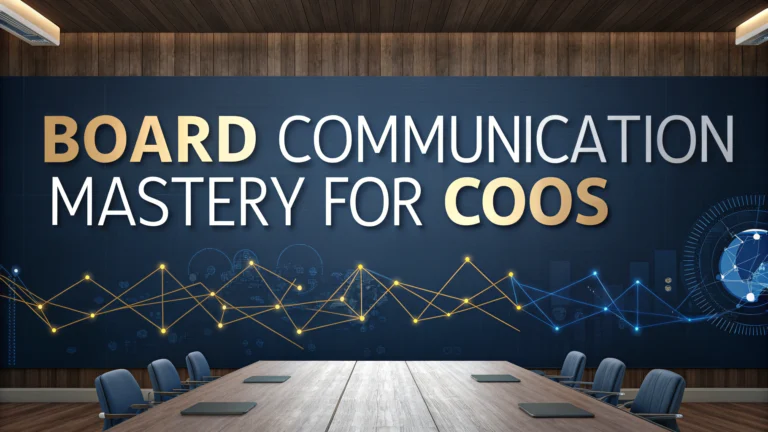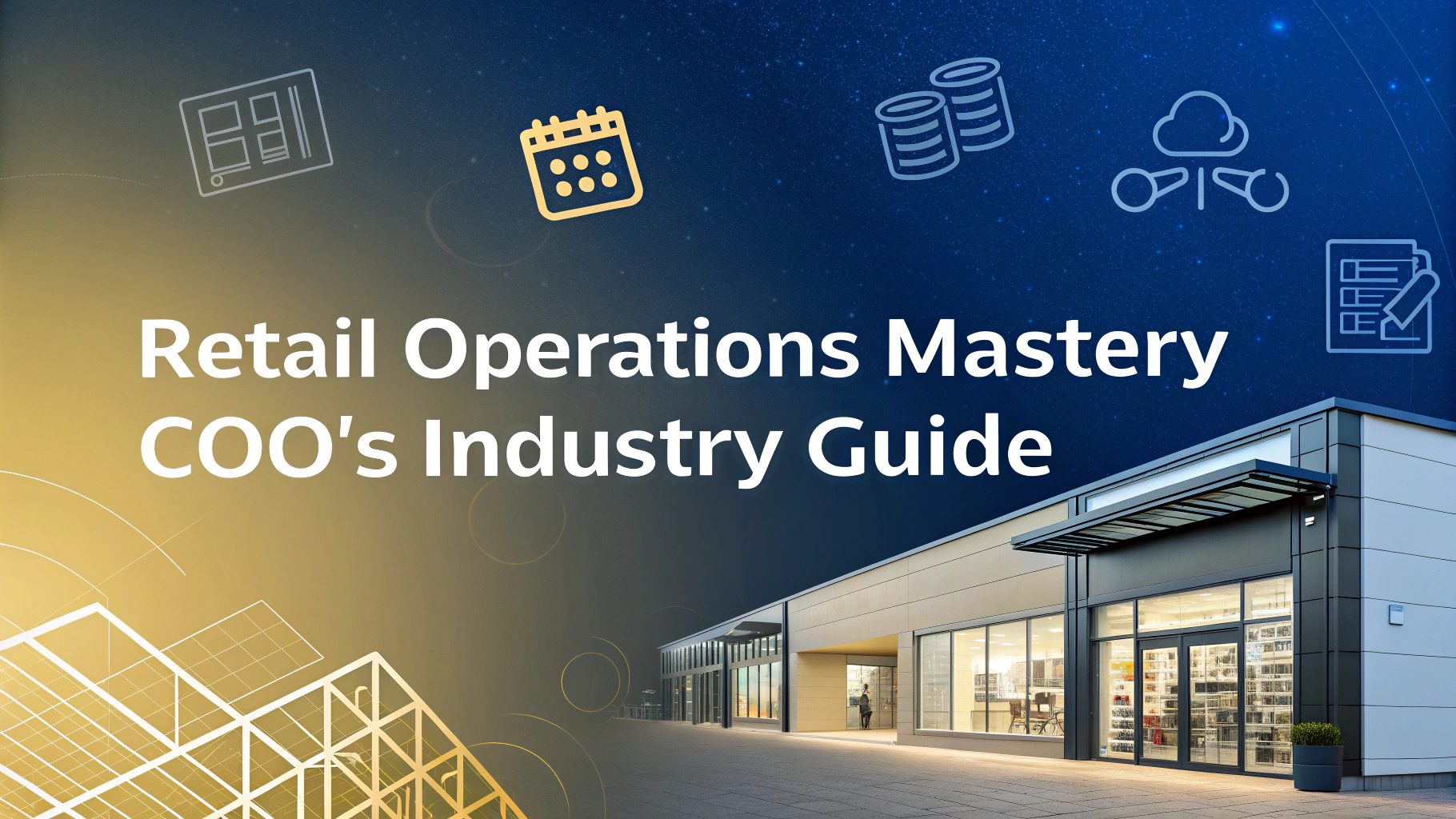Board communication sets successful COOs apart from their peers by enabling them to align strategic initiatives with company direction.
Effective board interaction requires a delicate balance of transparency, preparation, and strategic insight that directly impacts organizational success.
This guide provides actionable strategies for COOs to master board communications and build stronger relationships with directors.
Key Components of Board Communication
- Regular updates on operational performance
- Strategic initiative progress reports
- Risk management assessments
- Resource allocation updates
- Market positioning analysis
Preparing Board Materials
Structure your board materials using the “Executive Summary Framework” – highlighting key metrics, challenges, and recommendations upfront.
Focus on presenting data through visual aids like charts and graphs that quickly communicate complex information.
- Include:
- Performance dashboards
- Budget variance analysis
- Project milestone tracking
- Key risk indicators
Mastering Board Presentations
- Timing: Keep presentations under 20 minutes to allow discussion time
- Format: Use the 10-20-30 rule (10 slides, 20 minutes, 30-point font)
- Content: Focus on strategic impacts rather than operational details
Building Strong Board Relationships
Schedule regular one-on-one meetings with key board members to build rapport and understanding.
Create open communication channels for board members to reach you between formal meetings.
| Communication Channel | Purpose | Frequency |
|---|---|---|
| Email Updates | Quick updates on important matters | Weekly |
| Phone Calls | Time-sensitive issues | As needed |
| One-on-One Meetings | Strategic discussions | Monthly |
Managing Difficult Conversations
- Present challenges alongside potential solutions
- Use data to support your position
- Acknowledge board concerns proactively
- Follow up with written summaries of discussions
Technology and Tools
Implement secure board portal software for efficient document sharing and communication.
- Recommended Tools:
- Diligent Boards
- BoardEffect
- OnBoard
- BoardPaq
Next Steps for Enhanced Board Communication
Start by implementing a structured communication calendar that aligns with board meeting cycles.
Document your communication protocols and share them with your executive team for alignment.
For additional guidance, contact the National Association of Corporate Directors (NACD) at (571) 367-3700 or visit their website at www.nacdonline.org.
Measuring Communication Effectiveness
Track key metrics to assess the impact and effectiveness of your board communications:
- Board meeting participation rates
- Decision implementation speed
- Information request frequency
- Strategic alignment scores
Crisis Communication Protocols
Establish clear escalation procedures for critical situations requiring board notification:
- Define:
- Crisis classification levels
- Communication channels by severity
- Response time expectations
- Documentation requirements
International Board Considerations
Adapt communication strategies for global board members:
- Account for time zones in scheduling
- Provide materials in multiple languages when necessary
- Consider cultural communication preferences
- Use accessible technology platforms
Elevating Your Board Impact
Success in board communications requires consistent refinement and adaptation of your approach. Focus on building trust through transparency, maintaining professional preparation standards, and delivering strategic value in every interaction.
- Key Success Factors:
- Proactive communication stance
- Data-driven insights
- Strategic focus
- Relationship cultivation
Remember that effective board communication is an ongoing journey that evolves with your organization’s needs and objectives. Stay committed to continuous improvement and maintain open channels for feedback and adaptation.
FAQs
- What are the key components of effective board communication for COOs?
Key components include regular written updates, structured presentations, data-driven insights, strategic recommendations, operational performance metrics, risk assessments, and executive summaries of major initiatives. - How frequently should COOs communicate with the board?
COOs should provide formal updates at quarterly board meetings, monthly written reports, and immediate communication for material events or significant operational changes that could impact the organization. - What operational metrics should COOs regularly present to the board?
Key metrics include operational efficiency indicators, revenue per employee, cost management metrics, productivity measurements, customer satisfaction scores, employee turnover rates, and supply chain performance metrics. - How should COOs structure their board presentations?
Presentations should include an executive summary, key performance indicators, strategic initiatives progress, risk updates, resource allocation overview, and specific action items requiring board input or approval. - What role does the COO play in board risk communications?
COOs must communicate operational risks, compliance issues, potential disruptions to business continuity, workforce challenges, and mitigation strategies while providing regular updates on risk management initiatives. - How should COOs handle sensitive operational information in board communications?
Sensitive information should be clearly marked confidential, shared through secure channels, presented in executive sessions when appropriate, and follow all regulatory and compliance requirements. - What are the best practices for COOs when presenting operational challenges to the board?
Present challenges with proposed solutions, provide context, use data to support observations, outline multiple options when possible, and include projected outcomes and resource requirements. - How can COOs effectively communicate operational strategy alignment with board objectives?
Demonstrate clear links between operational initiatives and corporate strategy, provide progress metrics, highlight resource allocation alignment, and show how operational decisions support board-approved strategic goals. - What technology tools should COOs use for board communications?
Secure board portal software, encrypted communication platforms, digital dashboard tools for real-time metrics, and collaborative document management systems that ensure confidentiality and compliance. - How should COOs prepare for board meeting Q&A sessions?
Anticipate potential questions, prepare detailed supporting data, have subject matter experts on standby, and create brief but comprehensive responses to common operational inquiries.








